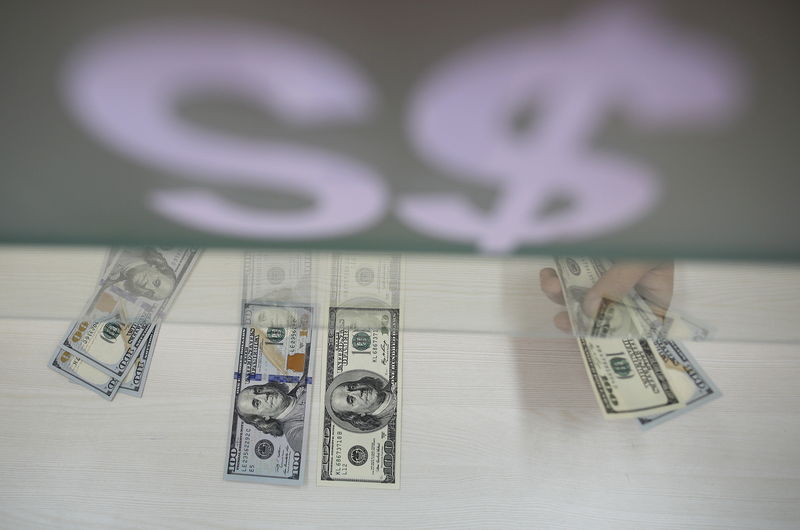Investing.com - The dollar ended broadly lower against the other major currencies on Friday as prospects for another interest rate hike by the Federal Reserve this year remained dim despite a much stronger-than-expected U.S. jobs report for June.
The U.S. dollar index, which measures the greenback’s strength against a trade-weighted basket of six major currencies, settled at 96.31 late Friday, off the highs of 96.72 hit in the immediate aftermath of the upbeat jobs data.
The Labor Department reported that the U.S. economy added 287,000 jobs last month, well above the 175,000 jobs forecast by economists.
Average hourly earnings were up 2.6% compared with a year earlier.
But the report also showed that the unemployment rate ticked up to 4.9% and May’s payrolls figure was revised down to 11,000 from a previously reported 38,000, the smallest monthly increase since 2010.
The strong jobs report was seen as unlikely to alter the Fed’s cautious plans for raising interest rates.
The dollar was lower against the yen in late trade, with USD/JPY down 0.19% at 100.59, not far from the two-year lows of 98.75 set in the wake of the shock U.K. Brexit vote.
The greenback was also weaker against the Australian and New Zealand dollars, but pushed higher against the Canadian dollar.
AUD/USD advanced 1.18% to 0.7571, NZD/USD rose 1.09% to 0.7307, while USD/CAD rose 0.32% to 1.3042 in late trade
The euro slid lower, with EUR/USD easing 0.13% to 1.1049.
The dollar was also higher against the Swiss franc, with USD/CHF at 0.9829 late Friday.
Sterling rose against the greenback following the data, with GBP/USD climbing 0.36% to 1.2951.
But the outlook for the pound remained to the downside ahead of what will be a closely watched monetary policy announcement by the Bank of England on Thursday.
The Bank of Canada is also to hold a monetary policy meeting in the coming week, with no changes to monetary policy expected.
Markets will also be looking ahead to data on second quarter growth out of China on Friday, as well as U.S. figures on consumer inflation, retail sales and consumer confidence the same day.
Ahead of the coming week, Investing.com has compiled a list of these and other significant events likely to affect the markets.
Monday, July 11
Finance ministers from the euro zone are to hold a meeting in Brussels.
Kansas Fed chief Esther George is to speak at an event in Missouri.
Tuesday, July 12
Australia is to publish private sector data on business confidence.
In the U.K. BoE Governor Mark Carney and several policymakers are to testify on inflation and the economic outlook before Parliament's Treasury Committee.
St. Louis Fed head James Bullard is to speak at an event in St. Louis.
Wednesday, July 13
China is to publish data on the trade balance.
The BoC is to announce its benchmark interest rate and publish its rate statement, which outlines economic conditions and the factors affecting the monetary policy decision. The announcement is to be followed by a press conference.
Thursday, July 14
Australia is to publish its latest employment report.
The BoE is to announce its monetary policy decision and publish the minutes of its policy meeting.
The U.S. is to release data on producer prices and initial jobless claims.
Friday, July 15
China is to release reports on second quarter economic growth and industrial production.
The euro zone is to publish revised inflation data.
BoE Governor Mark Carney is to speak at an event in Toronto.
Canada is to publish a report on manufacturing sales.
The U.S. is to round up the week with a string of data, including reports on consumer inflation, retail sales, manufacturing activity in the New York region, industrial production and consumer sentiment.
